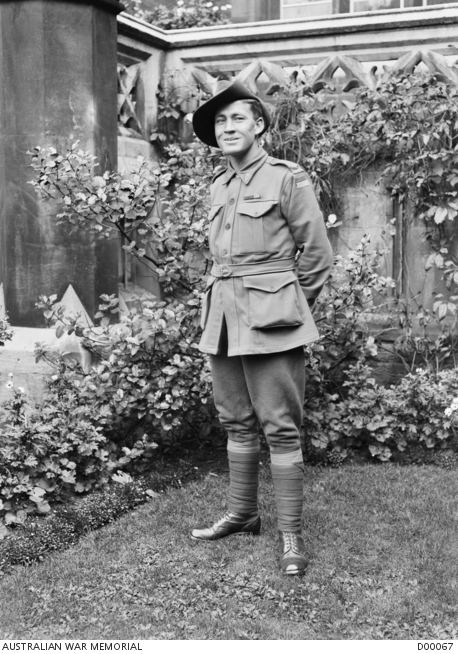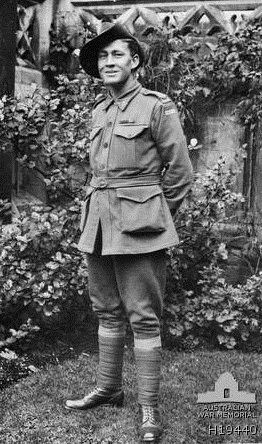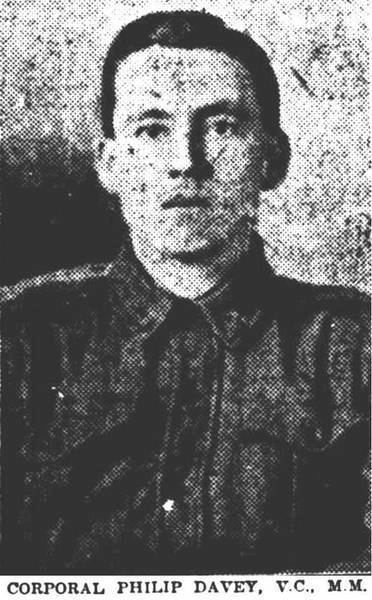Allegiance Australia Name Phillip Davey Service/branch Australian Army Battles/wars First World War | Rank Corporal Died December 21, 1953 Years of service 1914 - 1919 Role Armed force officer TV shows The Chart Show | |
 | ||
Born 10 October 1896Unley, South Australia ( 1896-10-10 ) Awards | ||
Phillip Davey, (10 October 1896 – 21 December 1953) was an Australian recipient of the Victoria Cross, the highest award for gallantry in the face of the enemy that can be awarded to British and Commonwealth forces. Davey enlisted in the Australian Imperial Force in December 1914, and joined his unit, the 10th Battalion, a fortnight before it went ashore as part of the covering force for the Landing at Anzac Cove, Gallipoli, on 25 April 1915. He fought at Anzac until he was evacuated sick in early November, returning to Australia.
Contents
He re-embarked for England in June 1916, and re-joined his battalion on the Western Front in October. Once back with his battalion, he was accidentally wounded and then gassed, and was also promoted to the rank of lance corporal. In January 1918 he was awarded the Military Medal for bravery in the field, which involved rescuing a wounded man under fire. He was then promoted to corporal. During the capture of Merris in June, he killed an eight-man German machine gun crew, saving his platoon from annihilation, for which he was awarded the Victoria Cross. During this action he was severely wounded. He returned to Australia to be discharged, and was employed by the South Australian Railways over many years before dying in 1953, having suffered for years with bronchitis and emphysema. He was buried with full military honours in the AIF Cemetery, West Terrace. His medal set is displayed in the Hall of Valour at the Australian War Memorial.

Early life

Phillip Davey was born on 10 October 1896 at Unley, South Australia, to William George Davey and his wife Elizabeth née O'Neill. His father was a carpenter. He attended the Flinders Street Model School and the Goodwood Public School. Prior to the outbreak of World War I he was a horse-driver.
World War I
On 22 December 1914, aged 18 years, Davey enlisted as a private in the Australian Imperial Force (AIF), and was posted to the 2nd reinforcements to the 10th Battalion with the regimental number 1327. He embarked with them at Melbourne on 2 February 1915 and sailed to Egypt. He joined the 3rd Brigade's 10th Battalion at the island of Lemnos on 10 April 1915. The 3rd Brigade was the covering force for the Landing at Anzac Cove, Gallipoli, on 25 April 1915 and so was the first brigade ashore about 4:30 am. He was involved in the heavy fighting at the landing and subsequent trench warfare defending the beachhead until, after several bouts of illness, he was evacuated to Egypt with enteric fever in early November. In January 1916 he was evacuated to Australia to recover his health. He re-embarked at Melbourne in June, arriving in the United Kingdom in August, and embarking for France the following month. He rejoined the 10th Battalion in early October.
On 15 March 1917, Davey was accidentally wounded by a hand grenade, but returned to duty less than a month later. In early May he was promoted to lance corporal, and in October he was gassed while his unit was in a reserve area, returning to his unit in early November. On 3 January 1918, Davey rescued a wounded soldier under heavy fire, and was awarded the Military Medal for bravery in the field. The recommendation read:
On the night of 3 January 1918, near Warneton, when on patrol one of our men was badly wounded by machine gun fire. On seeing this from a forward post, L/Cpl Davey crawled out through our wire to a distance of 60 yards and with another NCO brought in the wounded man. This was done under a bright moon and under heavy enemy machine gun fire. The work of this NCO was greatly admired by his officers and all who witnessed it.
On 24 April 1918, Davey was promoted to corporal, and the following month he was detached to Tidworth in England as an instructor, but returned to his unit of his own accord on 23 June. Five days later, he was with his battalion during the capture of Merris. During this battle his actions resulted in the award of the Victoria Cross, the highest award for gallantry that can be received by Australian service personnel. The citation read:
For most conspicuous bravery and initiative in attack. In a daylight operation against the enemy position, his platoon advanced 200 yards, capturing part of the enemy line, and whilst the platoon was consolidating, the enemy pushed a machine gun forward under cover of a hedge and opened fire from close range, inflicting heavy casualties and hampering work. Alone, Corporal Davey moved forward in the face of a fierce point-blank fire, and attacked the gun with hand grenades, putting half of the crew out of action. Having used all the available grenades he returned to the original jumping-off trench, secured a further supply, and again attacked the gun, the crew of which had in the meantime been reinforced. He killed the crew, eight in all, and captured the gun. This very gallant NCO then mounted the gun in the new post, and used it in repelling a determined counterattack, during which he was severely wounded. By his determination, Corporal Davey saved the platoon from annihilation, and made it possible to consolidate and hold a position of vital importance to the success of the whole operation.
Davey had sustained wounds to his back, abdomen and legs, and was evacuated to England. After he had recovered sufficiently he received his Victoria Cross, and was then embarked to return to Australia in October. He was discharged from the AIF on 24 February 1919. His brothers Claude and Richard were also awarded the Military Medal during World War I, with Claude being killed in action in 1917.
Later life
After returning from the war, Davey worked for the South Australian Railways as a labourer and linesman over three periods between 1926 and 1946. He married Eugene Agnes Tomlinson on 25 August 1928, there being no children of the union. After suffering for many years with bronchitis and emphysema, he died on 21 December 1953 of a coronary occlusion. He was buried at the West Terrace AIF Cemetery, Adelaide, with full military honours. In addition to the Victoria Cross, Military Medal, 1914–15 Star, British War Medal and Victory Medal for his service in World War I, Davey was also later awarded the King George VI Coronation Medal and Queen Elizabeth II Coronation Medal. His medal set, including his Victoria Cross, was presented to the Australian War Memorial in Canberra in 1967, and is displayed in the Hall of Valour.
